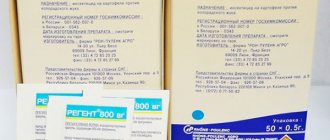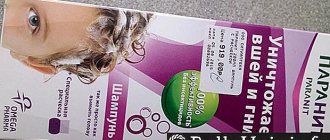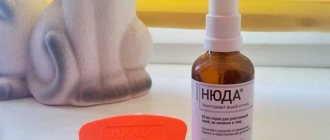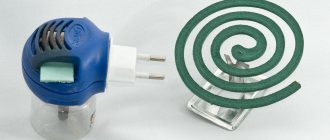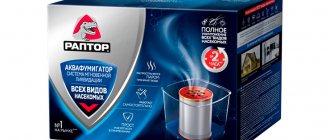Etiology of giardiasis
The causative agent of the disease is the protozoan Giardia intestinalis (more commonly known as Giardia lamblia). The route of transmission of the disease is fecal-oral as a result of ingestion of contaminated water and, much less frequently, food. The infection is easily transmitted from person to person: 25% of family members whose children are infected also develop giardiasis.
The infection is transmitted by ingesting Giardia cysts. The infectious dose for humans is very low - only 10–25 cysts can cause disease in 8 out of 25 people. Eating more than 25 cysts leads to the development of infection in 100% of cases. Transmission of Giardia from person to person is most likely due to non-compliance with sanitary and hygienic standards, for example, insufficient hand washing before eating. There is a significantly higher risk of infection among workers and pupils of preschool institutions. In addition, domestic animals, which are often carriers of G. intestinalis, are an important cause of outbreaks of giardiasis among humans.
Pathogenesis
The mechanism by which Giardia causes diarrhea and malabsorption is likely multifactorial and has not yet been fully elucidated. It is thought to include damage to the brush border epithelium of the upper small intestine, release of enterotoxins, immunological reactions, as well as changes in intestinal motility and increased fluid secretion due to increased adenylate cyclase activity.
The life cycle of Giardia consists of two stages - the trophozoite, which exists freely in the human small intestine, and the cyst, which is transmitted to the environment. Intermediate hosts are not needed to complete the full cycle. When cysts are ingested, excystation occurs in the stomach under the influence of hydrochloric acid and in the duodenum with the participation of pancreatic enzymes. The resulting trophozoites move to the small intestine, where they multiply rapidly, with a doubling time of 9–12 hours. After the trophozoite moves into the large intestine, encystment occurs, which requires a neutral pH and the presence of secondary bile salts. The cysts are transmitted into the environment through feces, and the cycle repeats.
Adhesion of Giardia trophozoites to the intestinal epithelium increases its permeability, which is accompanied by flattening of the intestinal villi, inhibition of disaccharidase activity, and ultimately the proliferation of intestinal bacterial flora. Partial atrophy of the villi in the duodenum and jejunum is also observed in histological sections of asymptomatic Giardia carriers. In addition, Giardia Lamblia can secrete cytopathic substances that damage the intestinal epithelium. Damage to the epithelium of the intestinal mucosa contributes to impaired absorption and the development of diarrhea. However, diarrhea can also develop in cases where the integrity of the epithelium of the small intestine is preserved.
Giardiasis. Clinical manifestations of giardiasis in children. Diagnostics. Treatment of giardiasis.
Giardiasis is a widespread human disease caused by microorganisms from the protozoan family – Protozoe Giardia Lamblia. The pathogen was first isolated in 1859 by the German scientist Lambl. But there are still unresolved problems in the treatment of giardiasis. Giardia is considered the cause of more than 20% of acute intestinal diseases.
Cases of giardiasis have been reported even in newborns.
Path of transmission. Pathogens enter the child's body through the mouth. The main channel of transmission of giardiasis is water. The route of transmission is fecal-oral. Giardia multiplies in the human small intestine very quickly: every 9-12 hours. An adult can excrete up to 18 billion cysts per day. Cysts are released every 10-20 days. A cyst (from the Greek kystos - bubble) is a form of existence of a microbe in the form of a capsule with a dense shell, which allows it to withstand various environmental influences without any harm to itself. They are resistant to acids, alkalis, and substances with active chlorine. They are completely neutralized only by boiling.
Once in the body, the cysts develop into vegetative forms: they develop suckers, with which Giardia clings to the wall of the small intestine. Giardia infection can disappear on its own after 6 weeks if the immune system is in good condition and local protection of the intestinal mucosa is present. In another case, the presence of Giardia may be asymptomatic for many years.
Clinical manifestations of giardiasis in children are varied. Most often this is the so-called dyspeptic syndrome: abdominal pain without clear localization or in the right hypochondrium, nausea, periodic vomiting, often loose stools. Due to the development of a concomitant inflammatory process in the duodenum (duodenitis) and small intestine (enteritis), malabsorption of nutrients occurs. Children lose weight, become paler, and get tired quickly. Duodenitis entails disruption of bile outflow and changes in pancreatic function. Very often, with giardiasis, children develop allergic skin reactions in the form of urticaria, Quincke's edema, and neurodermatitis. Often parents and children come to see a neurologist about obsessive movements – hyperkinesis. They manifest themselves in rapid blinking, twitching of the muscles of the face and shoulders, and excessive grimacing. And upon examination, as a rule, giardiasis is detected. That is, the presence of a parasitic infection in the body leads to a secondary disorder in the functioning of most of its systems. To some extent, biliary dyskinesia and kinks in the gallbladder, which impede the normal flow of bile into the duodenum, contribute to the development of infection.
Diagnosis of giardiasis is carried out according to clinical data, studies of stool, duodenal contents and blood. If this disease is suspected, it is advisable to use all laboratory methods, as they complement each other. For a more reliable detection of giardiasis, it is necessary to test feces repeatedly at intervals of 10-12 days and 3 days in a row. And antibodies to lamblia appear in the blood 10-14 days after infection. To assess the condition of the biliary system, liver and pancreas, an ultrasound examination of the abdominal organs should be performed.
Treatment of giardiasis is carried out in three stages:
- preparation , which consists of normalizing bile secretion. Recommendations depend on the abnormalities identified during examination and ultrasound;
- direct treatment of giardiasis. Today there are several methods of treatment: traditional - pharmacological, homeopathic and herbal medicine. But please do not self-medicate! Any drug, including homeopathic or herbal medicine, can have side effects. Entrust your child to a specialist. Among pharmacological agents, ornidazole (Tiberal) is used, which can be used even in young children. Metronidazole and its analogues, furazolidone, are also prescribed. A specific drug is prescribed only by a gastroenterologist, taking into account the characteristics of the child’s body and the tolerability of certain drugs. According to the literature and our experience, homeopathic treatment of giardiasis is effective in 85-90% of children. The following drugs are most often used: Mercurium solubilis or Mercurium dulcis, Chelidonium (celandine), Staphysagria, Taraxacum (dandelion), Lycopodium and some others, depending on the individual characteristics of the child and the course of the disease. Only a homeopathic doctor can competently select homeopathy. Raw pumpkin seeds and pumpkin pulp, garlic, aniseed licorice root, fig fruits, gentian root, peppermint leaves, fennel (dill), clover and many other plants have an antiprotozoal effect. In addition, at this stage the immune system is corrected with the help of special medications, food additives, vitamins, etc. Good nutrition and limiting sweets are necessary, since glucose is an additional energy source for Giardia;
- rehabilitation. This is the correction of vitamin deficiency and intestinal dysbiosis with the help of biological products. Giardiasis is treated by gastroenterologists and infectious disease specialists. Prevention measures are standard for infections transmitted by the fecal-oral route: compliance with sanitary and hygienic standards. Do not drink raw water, wash all vegetables and fruits thoroughly. Do not let dogs and cats lick you. You can become infected while swimming in a pond if children swallow the water. If your child has clinical signs of the disease or allergies or dysfunction of the nervous system do not go away for a long time, despite therapy, be sure to contact a gastroenterologist or, at the first stage, a pediatrician to rule out giardiasis.
Symptoms of giardiasis
Often the disease is asymptomatic. However, in some cases - according to various sources, from 5 to 70% - giardiasis is accompanied by clinical manifestations. Factors predisposing to symptomatic infection: hypochlorhydria, immunodeficiency, blood type A, malnutrition. The incubation period is 1–2 weeks, the average duration of the clinical manifestations phase lasts 3–10 weeks.
Clinical signs of giardiasis:
- diarrhea;
- malaise, weakness;
- bloating;
- flatulence;
- abdominal cramps;
- nausea;
- greasy stool with a strong unpleasant odor;
- anorexia;
- weight loss;
- vomit;
- rarely - low-grade fever;
- neurological symptoms (irritability, sleep disturbance, depression, neurasthenia);
- hives.
The severity of clinical symptoms depends on many factors, including the infectious load, the virulence of the pathogen and the host immune response. The most common manifestation, which is reported in 90% of cases of symptomatic giardiasis, is diarrhea. Slightly less often—in 70–75% of cases—flatulence and cramping abdominal pain develop.
Symptoms of chronic infection include chronic diarrhea, general malaise, nausea, anorexia and loss of appetite. 66% of symptomatic patients experience weight loss. Chronic sporadic diarrhea may last for several months.
Extraintestinal manifestations of the disease
They are quite rare and include allergic symptoms (urticaria, erythema, bronchospasm, reactive arthritis, biliary tract diseases). The etiology of extraintestinal symptoms is most likely the result of activation of the immune system.
Gastrointestinal manifestations
In some children, giardiasis begins with acute explosive watery diarrhea, abdominal cramps, vomiting, fever and general malaise. The duration of the acute phase does not exceed 3–4 days, after which the disease passes into the subacute period. However, as a rule, giardiasis manifests itself gradually. In such cases, the stool acquires an unpleasant odor and a soft, greasy consistency. Watery diarrhea alternates with soft stools or even constipation. Nausea, early satiety, bloating, heartburn - characteristic signs of subacute giardiasis - most often worsen after eating.
Complications of giardiasis can include developmental delay in children, slow growth and zinc deficiency in schoolchildren (data from Mexican scientists led by Luis Quihui, published in BMC Public Health in 2010).
Main symptoms of infection
Dr. Komarovsky talks a lot about the symptoms and treatment of Giardia in children, and at this point it is worth talking in more detail about those signs that may indicate the presence of parasites.
Symptoms can manifest themselves in a child in different ways, which is why it is difficult for an adult to independently determine whether a child is infected.
Giardia life cycle
It is for this reason that doctors strongly recommend paying attention to certain signs of infection, these include:
- an increase in body temperature in the evening, while such a symptom is not associated with extraneous causes, and the readings on the thermometer do not exceed 37.5 degrees;
- the child develops chronic diarrhea;
- during night sleep, the infected person grinds his teeth;
- the child becomes more tired, his concentration decreases, he wants to lie down and rest more;
- nagging pain occurs in the abdominal area, young children cannot explain where the source of pain is located, but older children will be able to explain that the pain is localized at the navel or under the right rib;
- the child does not gain weight, or loses a lot of kilograms;
- there are attacks of suffocating cough, which can occur several times a day;
- the number of eosinophils in the blood increases;
- There may be an increase in the size of the spleen, lymph nodes and liver gland.
If we talk about the last two points, then these symptoms can only be determined after the child is examined by a doctor. The rest of the symptoms are noticeable, and anyone can identify them, just watch the baby.
Lambius
If even a few of these symptoms bother a child, this should be a reason to consult a doctor.
Treatment
As a rule, asymptomatic patients do not need treatment, as they heal spontaneously within a few weeks of infection. The exception is cases when it is necessary to prevent infection of others, for example, infection of pregnant women from children.
In addition, children with acute and chronic diarrhea, malabsorption, or other gastrointestinal symptoms associated with Giardia intestinalis infection should be treated.
The basis of treatment for giardiasis is antiprotozoal therapy. Adequate rehydration and restoration of electrolyte balance are critical, especially in patients with large volumes of diarrheal loss.
Three groups of drugs are used as antimicrobial agents: nitroimidazoles, benzimidazoles and nitrofurans.
Nitroimidazoles
This class of drugs includes metronidazole, tinidazole, ornidazole, and secnidazole. The mechanism of the antiprotozoal action of metronidazole has been most studied. The drug penetrates the trophozoite and triggers the process of DNA damage, as a result of which the trophozoite dies. If tissue cysts are formed - conglomerates of a large number of trophozoites united by a membrane - the effectiveness of metronidazole is reduced due to insufficient penetration of the drug into the cyst.
Tinidazole, ornidazole and secnidazole have longer half-lives than metronidazole, allowing them to be used as one-day therapy. It has been proven that the clinical effectiveness of tinidazole, administered once in a pediatric dosage of 50 mg/kg body weight, ranges from 80 to 100% (average effectiveness 92%). However, it should be noted that tinidazole is prohibited for use in children under 12 years of age. The effectiveness of ornidazole is comparable to tinidazole (92–100%). The pediatric single dosage is 40 mg/kg body weight.
Secnidazole is close in effectiveness to tinidazole and ornidazole - according to clinical trials, the drug is effective in 85% of cases. It is usually prescribed once, the pediatric dose is 30 mg/kg.
Benzimidazoles
Two benzimidazoles are used to treat giardiasis: albendazole and, much less commonly, mebendazole. Drugs in this group inhibit the polymerization of the Giardia cytoskeleton and irreversibly suppress the utilization of glucose in the parasite's body.
In vitro, the susceptibility of Giardia to benzimidazoles is lower than to nitroimidazoles (a study by Australian scientists published in the International Journal for Parasitology in 1995). The results of treatment with mebendazole are inconsistent. Some sources report 90% effectiveness of the drug, others estimate it no higher than 60%. Therefore, albendazole is most often preferred to mebendazole, the effectiveness of which is 94–100%.
One of the advantages of albendazole in pediatric practice is its high effectiveness against many helminths. In addition, the drug is very well tolerated. The dosage of albendazole in children is 15 mg/kg body weight per day for 5–7 days. The combination of albendazole and metronidazole showed 100% effectiveness in patients resistant to metronidazole monotherapy (data from Italian scientists led by Bruno Cacopardo, published in the journal Clinical Therapeutics in 1995).
Nitrofurans
Among the large group of nitrofurans, only two drugs are used to treat giardiasis: furazolidone and nifuratel.
The mechanism of action of furazolidone against Giardia has not been fully studied. In in vitro studies, furazolidone shows comparable efficacy to metronidazole and shows consistent activity in children. In vivo, the effectiveness of furazolidone is generally considered to be slightly lower than that of metronidazole. Courses of treatment with furazolidone lasting 7–10 days are effective in 80–96% of cases (data from Egyptian scientists led by Samir Bassili, published in The American Journal of Tropical Medicine and Hygiene, 1970). When treatment lasts less than 5 days, the effectiveness of furazolidone is significantly lower.
The pediatric dose of furazolidone is 1.5–2 mg/kg body weight twice a day. It should be borne in mind that in 10% of patients taking furazolidone is accompanied by side effects - nausea, vomiting and diarrhea. The drug is contraindicated in children under 1 month of age due to the risk of developing hemolytic anemia.
Nifuratel, according to Russian scientists, is effective in more than 96% of cases (a study led by S. Yu Kononykhina, published in the journal “Issues of Modern Pediatrics” in 2005). The drug is prescribed at a dose of 30 mg/kg body weight, divided into two doses, for 7 days. The drug is well tolerated and is approved for children from 2 months of age.




